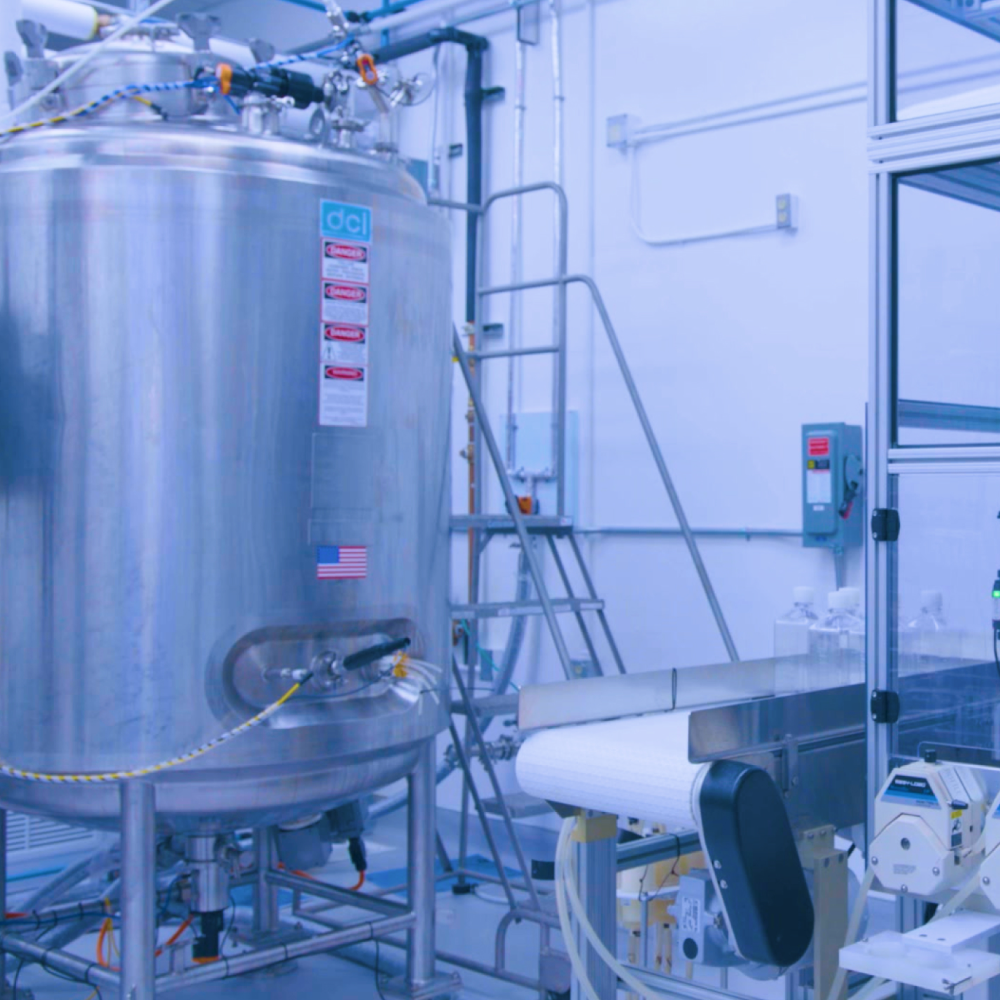AAV•Tek PCR Sample Prep Kit: DNase I Treatment + Dilution Plates
NOW AVAILABLE
Sample Prep Kit
Through extensive screening, we created an easy-to-use kit that can help you improve your AAV analytics and reduce the time needed for sample preparation to under two hours.
The kit features our proprietary optimized Dilution Buffer that's formulated to protect against the loss of viral DNA and prevent the inhibition of PCR. When used with the DNase I Treatment to remove exogenous DNA, it allows you to get more accurate titer quantification.
For your convenience, we offer the kit with the Dilution Buffer either in tubes or prefilled 96-well plates. The components of the kits are otherwise the same and follow the same protocol. Either version of the kit can be used throughout your AAV workflow, from harvest to polishing to storage.
Explore the PCR Sample Prep Kit options
For your convenience, we offer the kit with the Dilution Buffer either in prefilled 96-well plates (10 plates with 1x Dilution Buffer) or in tubes (10 tubes of 10x Dilution Buffer). Both versions of the kit include a DNase I Treatment consisting of 1 tube of DNase I (RNase-Free) and 5 tubes of DNase Reaction Buffer.
AAV•Tek PCR Sample Prep Kit: DNase I Treatment + Dilution Buffer
How it works
To increase the accuracy of titer quantification, we developed a novel Dilution Buffer that protects against the loss of viral DNA and prevents the inhibition of PCR. This is the core component of our new streamlined method for sample preparation, which takes less than two hours, end-to-end.

This protocol will guide you through the process of using the AAV•Tek PCR Sample Prep Kit so you can get optimal results. Have a question? We're here to help. Drop us a line at research@teknova.com or call 1.800.209.4488.
PCR sample preparation,
simplified
The AAV•Tek PCR Sample Prep Kit is designed to help you overcome five common challenges in AAV sample preparation to ensure you get high yields and reproducible titers.

Shows robustness across serotypes,
platforms, and purification steps
Results were confirmed for AAV2, AAV6, and AAV8. To determine the robustness of the optimized protocol, multiple serotypes, PCR platforms, and steps within the manufacturing workflow were analyzed using the determined method. The figure below shows examples for AAV2 for qPCR and dPCR. The x-axes represent the steps at which the samples were analyzed: Harvest Lysate, Filtrate, Affinity Load and Eluate, and AEX Eluate. Looking at the trends on the graphs, you can see a significant difference between optimization rounds 1 and 2 and a large jump from rounds 2 to 3.
The kit has been tested for qPCR and dPCR, but has not been verified for use with ddPCR. However, the technology behind ddPCR and dPCR is very similar, as they both use positive/negative fluorescence and statistics for quantification, so we do not anticipate any issues when using this sample preparation kit for ddPCR.
Yes, the kit has been tested for AAV2, AAV6, AAV8, and AAV9. See our robustness study for more details. If you are working with other serotypes, get in touch with our team—we may be able to perform tailored testing for your application.
No, this kit is designed for sample preparation only and will not quantify your sample. Further analysis via PCR methods is required after using this kit.
Once you've completed the capsid disruption step, transfer your prepared DNA into your PCR master mix in preparation for your PCR reaction.
We do not see a dramatic difference in titer recovery between our capsid lysis method (heat treatment) and other methods, such as enzymatic or salt and detergent containing lysis buffers. However, we recommend using the heat treatment method for capsid lysis for ease of use. There are fewer variables and components needed, as well as minimal dilution requirements to remove the impact of the lysis component.
Yes, this kit has been tested through multiple stages in the purification process. See our robustness study for more details.
The plates are designed for ease of use when you are doing serial dilutions. They are prefilled with 90 uL of dilution buffer per well and can be used in the immediate next step to perform capsid disruption in a thermocycler before proceeding to the final PCR analysis. The 10x dilution buffer is made to be diluted to 1x and used however you'd like.
Absolutely! We're happy to tailor concentration and format to fit your needs. Get in touch with our team to submit your request.
Find out what’s possible
Talk to our consultants today to discover custom solutions that can help you achieve your goals.























